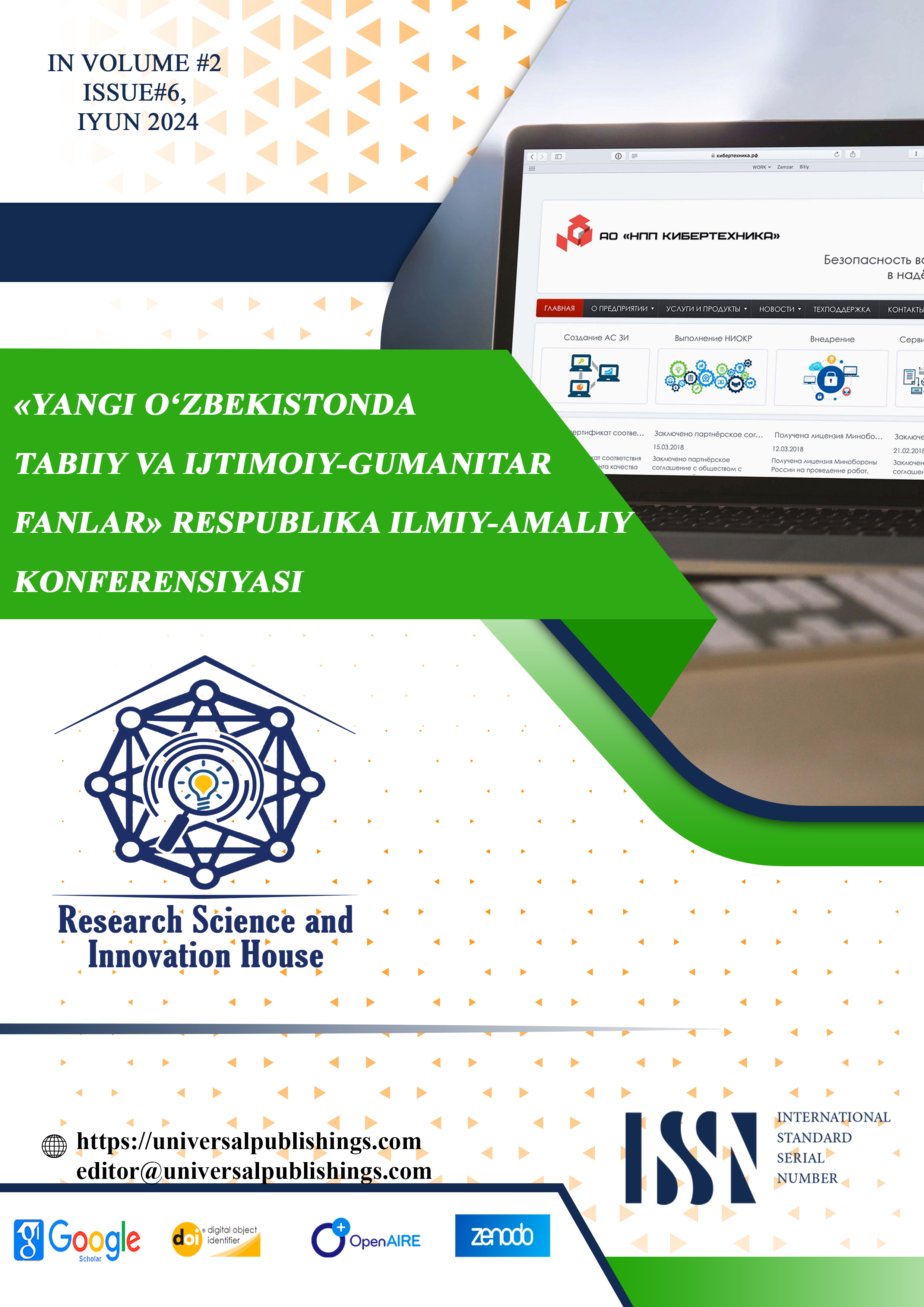Abstract
This paper explores the intricate relationship between figurative language and persuasive speech acts in English and Uzbek, highlighting the cultural nuances and linguistic strategies employed in each language. The study reveals how metaphors, proverbs, and other figures of speech are deployed to achieve different persuasive goals, reflecting the distinct cultural values, communication styles, and social contexts of the two languages. By analyzing specific examples and drawing upon relevant theoretical frameworks, the paper argues that understanding these cultural variations in figurative language is crucial for successful cross-cultural communication and for navigating the complex landscape of persuasion
References
1. Pliushch, B. O. Indirect translation and the issue of culture specific terms rendering. www. seanewdim. com, 65.
2. Toropova, E. V., Zhukova, E. F., Malenko, S. A., Kaminskaya, T. L., Salonikov, N. V., Makarov, V. I., ... & Grinev, A. M. MAN, SOCIETY, COMMUNICATION.
3. Gadaev, A., Ismoilova, M., & Turakulov, R. (2022). Comparative analysis of calprotectin and helicobacter pylori in the faces and interleukin-6 in the blood of patients with and without COVID-19 before and after the treatment. Scientific Collection «InterConf+», (26 (129)), 236-242.
4. Исмоилова, М. И. (2022). РОЛЬ КАЛЬПРОТЕКТИНА В ДИАГНОСТИКЕ ВОСПАЛИТЕЛЬНЫХ ПРОЦЕССОВ В КИШЕЧНИКЕ У БОЛЬНЫХ COVID-19. Университетский терапевтический вестник, 4, 62-62.
5. Ismailova, M. I. (2024). A COMPARATIVE STUDY OF THE CLINICO-ENDOSCOPIC PICTURE OF GASTROESOPHAGEAL REFLUX DISEASE AND THE MENTAL STATE OF PATIENTS. Oriental Journal of Medicine and Pharmacology, 4(02).

